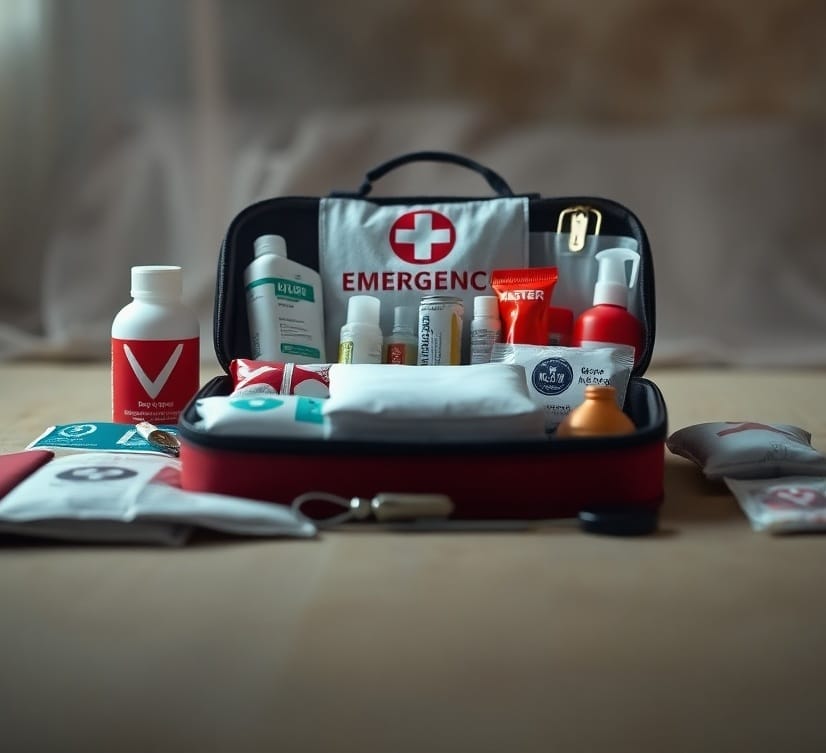Greetings, fellow Ohioans!
Old Man Winter is knocking at our door, and it’s time to get prepared for the potential wrath of Mother Nature. While we love a cozy snow day as much as the next person, winter storms can bring unique challenges, especially when the power goes out. But fear not, friends! With a little preparation and some savvy tips, you can weather any storm in comfort and safety.
Step 1: Prepare Your Home

Think of your home as your winter fortress. You’ll want to ensure it’s well-insulated and ready to keep you warm and toasty, even if the power goes out. Here’s how:
- Insulate and Seal: Proper insulation is key to retaining heat and preventing those pesky frozen pipes. Insulate walls, attics, and any water lines that run along exterior walls. Seal any cracks and gaps around windows and doors with weatherstripping or caulk to keep those icy drafts at bay.
- Heating System Check: Make sure your heating system is in tip-top shape by scheduling a preventative maintenance check. It’s also a good idea to have a reliable heating repair service contact on hand, just in case. And if you have a fireplace or wood-burning stove, stock up on dry, seasoned wood.
- Prevent Frozen Pipes: Letting cold water drip from faucets served by exposed pipes can help prevent them from freezing. You can also open cabinet doors under sinks to allow warmer air to circulate around the pipes. And don’t forget to disconnect and drain outdoor hoses to prevent water from freezing and expanding in the pipes.
Step 2: Gather Your Emergency Supplies
When the power goes out, you’ll want to have a well-stocked emergency kit to keep you comfortable and safe. Here’s what you’ll need:

- Water: Aim for at least one gallon of water per person per day for several days.
- Food: Stock up on non-perishable food items that require no cooking or refrigeration, such as canned goods, granola bars, and dried fruit.
- Lighting: Flashlights, headlamps, and extra batteries are a must. Consider battery-powered lanterns for larger areas.
- Communication: A battery-powered or hand-crank radio will keep you informed about weather updates and emergency information. Fully charge your cell phone and consider a portable charger.
- Warmth: Gather extra blankets, sleeping bags, and warm clothing to stay warm indoors.
- First Aid: Keep a well-stocked first-aid kit on hand.
- Other Essentials: Don’t forget a manual can opener, a whistle to signal for help, and any necessary medications.
Step 3: Stay Safe and Warm
If the power goes out, staying warm and safe is your top priority. Here’s how to do it:
- Dress in Layers: Wearing multiple layers of loose-fitting, lightweight clothing helps trap warm air and keep you cozy. Don’t forget hats, mittens, and warm socks.
- Conserve Heat: Close off unused rooms and place towels or blankets under doors to prevent drafts. You can also cover windows with blankets or sheets at night to reduce heat loss.
- Find a Warm Room: If possible, gather everyone in the warmest room of the house, such as one with a fireplace or south-facing windows.
- Stay Active: Light physical activity can help generate body heat.
- Warm Food and Drinks: Drinking warm beverages and eating warm foods can help regulate your body temperature and provide a sense of comfort.
Step 4: Cook and Prepare Food Safely
If you need to cook food without electricity, there are safe options available:

- Outdoor Cooking: Barbecue grills and portable gas stoves can be used to cook a variety of foods outdoors. Always use them in a well-ventilated area.
- Indoor Options: If you have a fireplace, you can grill food or wrap it in foil and cook it in the embers.
- Food Safety: Focus on foods that don’t require cooking, such as canned goods, bread, and fruit. Keep refrigerator and freezer doors closed as much as possible to maintain the cold temperature. If you have a safe source of heat, boil all water used for drinking and food preparation for at least 10 minutes to ensure it is safe.
Step 5: Stay Connected
Communication can be challenging during a power outage, but here are some tips to stay connected:
- Cellular Communication: Text messages are more likely to get through than phone calls during network congestion. You can also use social media platforms to update your status and check on loved ones.
- Other Options: If you have a corded landline phone, it may still work during a power outage. Battery-powered radios can also keep you informed about weather updates and emergency information.

Winter storms may bring their challenges, but they also bring opportunities for cozy moments and making memories (and maybe even some snow ice cream…if the snow’s clean, of course!). What are your favorite ways to stay cozy and entertained during a power outage? Share your tips and stories in the comments below – let’s inspire each other to embrace the snowy season safely and joyfully!

